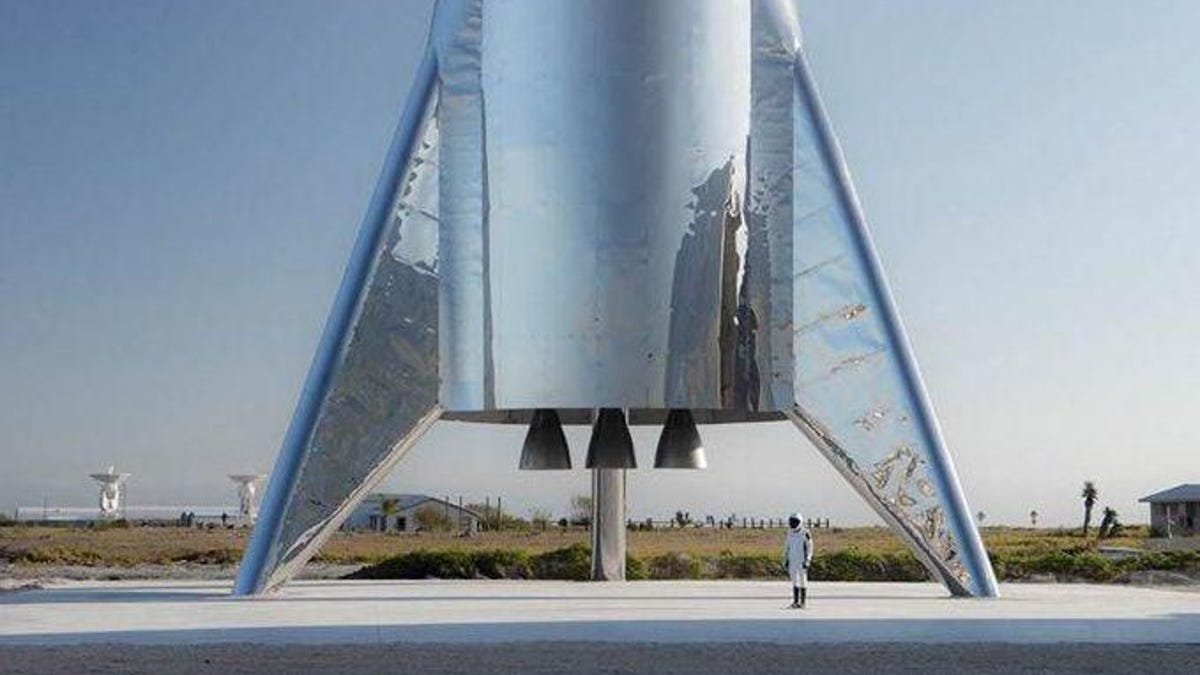SpaceX to launch Starhopper 16,400 feet high in next test flight
If all goes well, the Starship prototype will blast off to a height of between 500 and 5,000 meters.

The business end of the SpaceX Starship hopper prototype.
SpaceX will launch test flights of the Starhopper to a height of up to 5,000 meters.
Elon Musk's company is expecting a maximum altitude of 16,400 feet, according to documents filed with the US Federal Communications Commission and spotted by The Verge.
"The vehicle will fly vertically from the ground to under 500 meters for its low-altitude tests and up to 5000m for its high-altitude tests," the filing says.
Starhopper will be launched out of the SpaceX South Texas launch site in Boca Chica, Texas, the documents add.
Musk last month shared footage of the Starhopper lifting off and hitting its tether limits.
The Starhopper isn't meant to reach space, but rather test the single Raptor engine-powered tethered prototype of the Starship that eventually aims to get humans off the Earth to Mars.
Musk is planning to launch a Starship full of artists around the moon in 2023.
The hopper first fired up on April 3, with the US Federal Aviation Administration originally posting an airspace closure of up to 1,000 feet high around the Boca Chica facility "to provide a safe environment for rocket launch and recovery."

